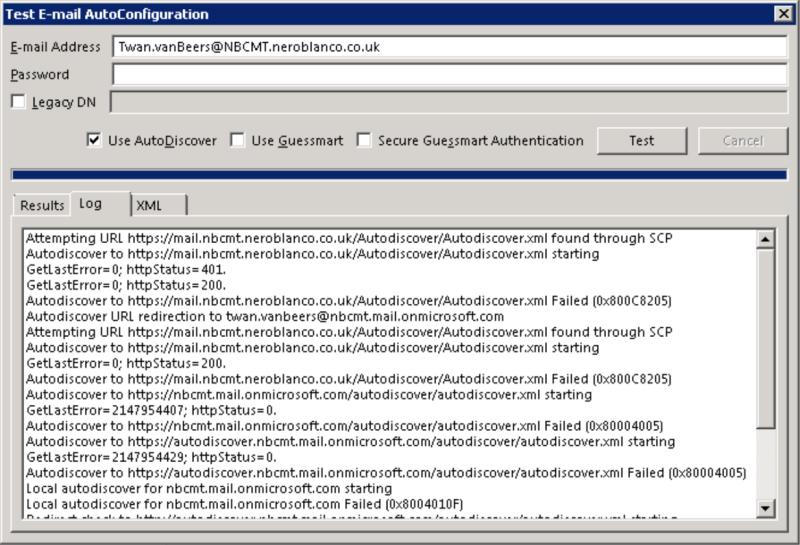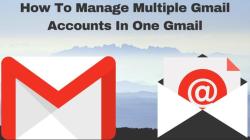What is Autodiscover and how does it work?
Autodiscover is a feature in Microsoft Exchange Server and other email systems that simplifies the configuration of email clients. It automates the process of configuring email profiles by providing clients with the necessary information, such as server names, connection settings, and security options, without requiring users to manually enter these details.
Here's how Autodiscover works and its key mechanisms:
Service Location Records (SRV):
- Autodiscover relies on DNS Service Location (SRV) records to locate the Autodiscover service for a domain. These records specify the location of the Autodiscover service, allowing email clients to find the necessary configuration information.
HTTPS Connectivity:
- Autodiscover communication typically occurs over HTTPS (Hypertext Transfer Protocol Secure). Clients initiate a secure connection to the Autodiscover service using the Autodiscover URL, which is based on the user's email address and domain.
Outlook Anywhere (RPC over HTTP/S):
- Autodiscover utilizes the Outlook Anywhere (formerly known as RPC over HTTP) protocol to facilitate communication between Microsoft Outlook clients and the Exchange server. This protocol allows Outlook to connect securely to Exchange over the internet without the need for a VPN.
XML Response:
- When an email client queries the Autodiscover service, it receives an XML (Extensible Markup Language) response that contains the required configuration settings. This XML file includes details such as the user's email address, server names, authentication methods, and other connection parameters.
Autodiscover URL:
- The Autodiscover URL is constructed based on the user's email address. For example, if the email address is [email protected], the Autodiscover URL might be https://autodiscover.example.com/Autodiscover/Autodiscover.xml.
Autodiscover Process:
- The Autodiscover process begins when an email client, such as Microsoft Outlook, is configured for a user's email account.
- The client queries DNS for Autodiscover service records (SRV records) for the domain associated with the email address.
- The client connects to the Autodiscover service using the Autodiscover URL obtained from the SRV records.
- The Autodiscover service returns an XML file with the necessary configuration details for the email client.
- The client uses the information from the XML file to automatically configure the email account settings.
Fallback Mechanisms:
- Autodiscover supports fallback mechanisms to handle various scenarios. For example, if the SRV records are not available, the client may attempt to connect directly to predefined URLs based on the domain.
Autodiscover simplifies the email setup process for users and administrators, particularly in environments with Microsoft Exchange Server. It reduces the likelihood of configuration errors and ensures that email clients can seamlessly connect to the email server with minimal user intervention.
How would you define Autodiscover and what are its mechanisms?
Autodiscover is a protocol used by certain applications, primarily Microsoft Office and Exchange Server, to automatically configure themselves with the necessary settings to connect to email servers and other services. It essentially removes the need for manual configuration and streamlines the setup process.
Here's a breakdown of its definition and mechanisms:
Definition:
- Autodiscover is a technology that enables applications to automatically discover the location and configuration settings of email servers and other related services. It eliminates the need for users to manually enter server addresses, usernames, passwords, and other details.
- It acts like a "phone book" for email servers, storing information about their location and settings in a specific way that applications can easily access and understand.
Mechanisms:
- DNS Lookup: Autodiscover typically starts by querying a Domain Name System (DNS) record associated with the user's email domain. This record points the application towards a specific "Autodiscover service" hosted by the email provider.
- XML Response: The Autodiscover service then sends back an XML file containing all the necessary configuration settings for the user's email account, such as server addresses, protocols to use, security settings, and more.
- Application Configuration: The application then parses the XML response and automatically configures itself with the retrieved settings. This allows the user to send and receive emails, access calendars, and utilize other features without any manual setup.
Benefits of Autodiscover:
- Ease of use: Users no longer need to understand complex server settings or manually configure their applications.
- Reduced errors: Autodiscover eliminates the risk of typos or incorrect configuration, ensuring a smooth connection to email services.
- Scalability: It simplifies the setup process for large organizations with many users.
- Flexibility: Autodiscover can be used to configure various applications beyond email, such as calendar and contact synchronization tools.
Limitations of Autodiscover:
- Security concerns: The reliance on DNS records and XML files raises potential security vulnerabilities if compromised.
- Troubleshooting complexity: If Autodiscover fails, diagnosing the issue can be challenging due to the underlying technical aspects.
- Limited compatibility: Not all email providers and applications support Autodiscover.
Overall, Autodiscover is a valuable technology that simplifies email setup and improves user experience. However, it's crucial to be aware of its limitations and take appropriate security measures to ensure its safe and reliable operation.
I hope this explanation clarifies the definition and mechanisms of Autodiscover for you. Feel free to ask if you have further questions or need more information on specific aspects.













